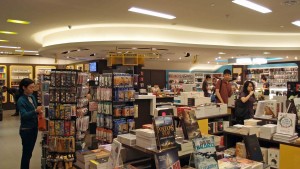King’s College London is one of the leading universities in the UK. In early April 2013, I was at King’s College London to sign an agreement on two concurrent degrees. With this new agreement, each year, six students will have the opportunity to participate in one of two concurrent degree programmes. The first is a BSc (Hons) in Life Sciences and an MRes in Molecular Biophysics; the second is a BSc (Hons) in Life Sciences or Chemistry, and MSc in Forensic Science or Analytical Toxicology. Students reading these concurrent degrees will spend the first three years at NUS to earn their Honours degree, and the fourth year at King’s College London to read their Master’s degree. During the course of the undergraduate degree, students may also spend a semester or two at King’s College London under the Student Exchange Programme (SEP).
NUS is mindful that there are costs associated with these overseas learning opportunities. For students participating in these concurrent degree programmes with King’s College London, the NUS Faculty of Science has worked out arrangements with various parties to help mitigate the higher costs of living in London. NUS students going on SEP and other overseas learning programmes may also apply for NUS Awards for Study Abroad (NASA) Scholarships. In addition, students from needy Singaporean families may apply for NASA Bursaries.
This agreement between King’s College London and NUS represents yet another effort in our endeavour to enhance opportunities for NUS students to partake in global learning. A lot of effort goes on (often behind the scenes) to ink an SEP agreement. The latest agreement for example, was mooted in 2008. It took six years of hard work and negotiations by the NUS Faculty of Science and the School of Biomedical Sciences, King’s College London, to reach this positive outcome.
Today, about 1,700 NUS students will go abroad each year on SEP with one of our 300 partners overseas. At the same time, as part of the exchange agreements, NUS will host a similar number of foreign students from our partner universities. Managing such a large number of student movements is no trivial task – each of these 3,400 incoming and outgoing students has his or her specific issues which we need to help address. These include, amongst others, selection of host university, courses to read, mapping courses back to fulfill degree requirements, accommodation, travel arrangements, food, insurance and financial aid.
I recall, when I was a Sub-Dean at the NUS Faculty of Science in the mid 1990s, I did not have to deal with such issues, simply because we did not have any exchange programmes then! The system has since evolved rapidly. We now have many more academic programmes and pathways that students can choose from, according to their interests and inclinations. With these choices and options, the system has become far more complex, and the range of issues and administrative tedium to contend with has also increased in tandem.
Nevertheless, NUS will press on. There is much value in an overseas stint, to broaden one’s perspectives and to hone one’s global awareness and cross-cultural skills. NUS will continue to expand the opportunities for our students to spend time abroad. We hope that in the next few years, at least 70% of NUS students will have gone for at least one overseas learning programme. In the years ahead, we expect to send about 2,000 NUS students overseas on SEP and other semester-long programmes, and receive a similar number of incoming students every year.
One interesting opportunity that I would like to encourage our students to explore is the STEER Programme (Study Trips for Engagement and EnRichment). The STEER programme is a rare opportunity for students to gain exposure to less conventional, yet rapidly emerging regions. The programme combines classroom-based learning which is augmented with site visits to personally experience the social, cultural, economic, political and business environments of these thriving regions. Under the STEER programme, NUS students have visited Saudi Arabia, the United Arab Emirates, India (Hyderabad, Mumbai) and China. Two more new programmes to Myanmar and Brazil have been planned for 2013. Do check out the International Relations Office website for more information on the STEER programme.




